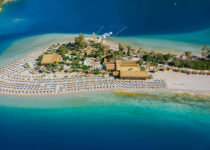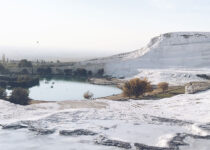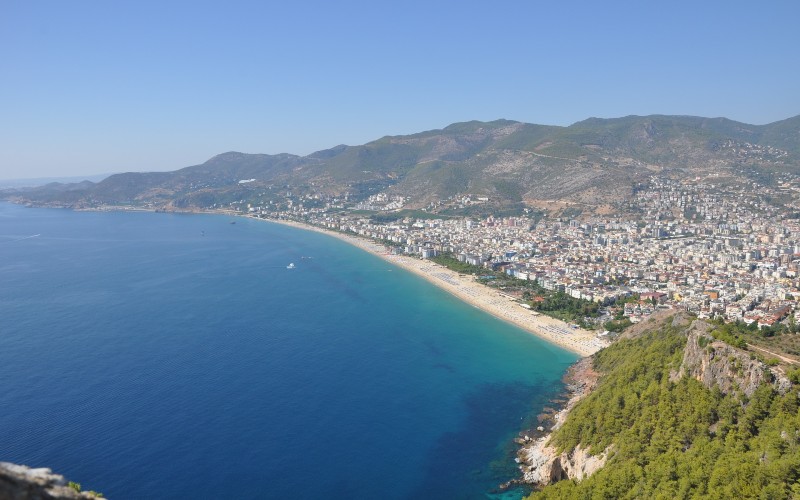The Historical Significance of Troy in Turkey
Troy, a city in modern-day Turkey that was known to be ancient has a real splendor in the context of the history of mankind. Troy in Turkey has always been a famous place of history, an object of study and a landmark for historians, archeologists and tourists from all over the world. The city has a history teaching us about great narratives, a rich tapestry of the past, and archaeology, thus in its way it is a piece of land that serves as a bridge between ancient times of the world and the modern scholarship. The Troy ancient city is still a great source of inspiration, which is in fact the symbol of the heroism, deceit, and destiny that tell the stories of Troy, Greek mythology, Western literature, and historical research.
Trojan War & Mythology

One of the key reasons for the popularity of Troy Turkey is because it is the setting of the Trojan War, which is described in The Iliad. Legend has it that Paris, a prince of Troy, kidnapped Menelaus’ wife, Helen, which resulted in a ten-year war fought between the Trojans and Greeks. What ancient civilization went to war with Troy? The Greeks, with Agamemnon at the helm, began a massive siege of the city. This war featured legendary warriors like Achilles, Hector, and Odysseus, along with divine interventions by gods from Zeus to Athena, as well as Apollo. The legendary Wooden Horse of Troy, an intellectual Greek tactic to enter and demolish Troy archaeological site, is one amid the most celebrated military maneuvers in literary history. Though its historical accuracy is disputed by historians, the war has inspired art, literature, and drama without number.
Archaeological Inventions and Excavations
The quest for true Troy in Turkey intensified during the 19th century when Hisarlık in northwestern Turkey was excavated by German archaeologist Heinrich Schliemann. Through his findings, several layers of the ancient settlements were discovered, ensuring that ancient Troy existed more than a figment of myth. Subsequent digs by Carl Blegen, Wilhelm Dörpfeld, and modern crews have revealed at least nine different layers, which means the city was inhabited throughout from the early on Bronze Age up to the Byzantine era. What did Troy look like? Archaeological discoveries, such as pottery, arms, and defenses, provide significant clues about the civilization that flourished there, testifying to the strategic and cultural importance of Troy archaeological site.
Trade Significance & Strategic Location

Where was Troy located? Troy Turkey was strategically positioned close to the Dardanelles Strait, which made it an important nexus between the Aegean as well as Black Seas. Its geographical position facilitated Troy ancient city to prosper as a center for commerce, linking merchants to sailors along with armies from other civilizations. Troy was of significant economic and military importance, and it drew interest from the Greeks to Hittites as well as Romans. Through centuries, the ruins of Troy ensured control over the major trade routes, promoting the prosperity and influence of the city.
Byzantine & Roman Contributions
With the fall of Ancient Troy, its city became renewed in significance through the Roman years. The Romans, who were heavily influenced by Greek mythology themselves, traced back their ancestry as Trojans through Aeneas, Trojan prince, and legend has him fleeing to Italy and becoming ancestor to Rome’s founders. The city of Troy Turkey was reconstructed and developed with new temples to theaters along with public structures by Emperor Augustus. The Byzantines, aware of the historical importance of Troy ancient city, preserved the site, though its importance declined as Constantinople became prominent.
Troy Museum & Celebrated UNESCO World Heritage

Ascertaining its sheer cultural and historical significance, the archaeological site of Troy was inscribed in UNESCO World Heritage List in 1998. It identifies it as an important archaeological and mythological site. A Troy Museum near the archaeological site, which was opened in 2018, displays the artifacts unearthed through excavations like pottery, sculptures, and antique weapons. The museum has an in-depth explanation of who is Troy and incorporates archaeology along with story-telling for visitor as well as scholar enticement.
Troy in Popular Culture and Current Day Tourism
Troy currently is still one of the top historical attractions in Turkey. Travelers from everywhere visit the remains of Troy, standing in front of the rebuilt Wooden Horse, which represents the mythical war. So, where is Troy in Turkey placed? Situated close to Çanakkale, the site draws history buffs willing to walk along the remains of its ancient temples and walls.
Aside from tourism, Ancient Troy has made a lasting impact on popular culture, inspiring movies, to video games as well as literature. The 2004 Hollywood epic Troy, with Brad Pitt playing Achilles, brought the classic story to a worldwide audience, and attention to Troy Greek mythology along with its historical context was renewed.
Troy’s Unending Legacy
Ancient Troy’s legacy is enduring. It connects history and myth, stimulating scholars, artists, and tourists. Through Homer’s lines, archaeological excavation, or film adaptations, Troy in Turkey remains a source of fascination and intellectual curiosity.
Tourists tend to inquire regarding Troy Turkey weather. The area has a Mediterranean climate with balmy summers and moderate winters. Turkey in July presents sunny days that are perfect for viewing the Troy’s ruins and other sites of interest.
Conclusion
The historical importance of Troy goes beyond its archaeological sites; it is a rich weave of mythological stories and cultural interactions that influenced ancient societies. Being amid the celebrated best historical sites in Turkey, it still fascinates researchers and travelers alike with its lasting legacy.
FAQs
Q1. How can travelers experience Troy at its best?
Travelers can survey the ruins, stop over the famed Troy Museum, explore Trojan Horse as well as opt for guided tours which works wonders in bringing the primeval city’s mythology and history to life.
Q2. What evidence implies that Troy has been ruined by war?
Archaeologists discovered fire damage, slingstones, and destruction layers spanning 1190 BC, implying warfare. Earlier destruction however spanning 1300 BC was not merely conflict yet caused via an earthquake.
Q3. How many Troy layers have actually been discovered?
Nine layers of ancient city of Troy have indeed been discovered, each representing a diverse era of habitation, spanning 3500 BC until the Roman age.
Q4. List vital Troy Exploration Tips
- Review weather of Troy Turkey
- Pack appropriately
- Hire a proficient guide
- Revere the ruins
Q5. List the vital archaeological discoveries in Troy.
- Weapons
- Pottery
- Houses
- Temples
- City walls



